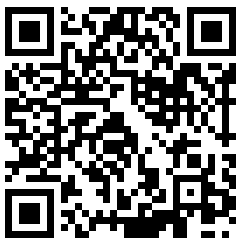بازآفرینی و بهسازی کیفیت مکان های شهری با رویکرد طب سوزنی
چکیده: بافت های حاشیه ای و فرسوده شهرها اغلب در محدوده های پایین دست، محروم از امکانات اجتماعی، اقتصادی و کالبدی شهری بوده و عدم پویایی و رونق اقتصادی در آن ها، علاوه بر اثرات کالبدی، افول عملکردی و زمینه های رشد مشکلات فرهنگی را در پی خواهد داشت. طب سوزنی شهری روشی نوین در علوم برنامه ریزی شهری بوده که در آن با گشودن انسدادهای موجود در شریان های شهری و یا اعمال یک فاکتور محرک توسعه، نیروی زندگی را به آن شهر برمی گرداند. این سویه از مداخله می تواند با جراحی یک بافت متراکم بی تحرک شهری انجام شود و یا با اعمال یک پروژه مشوق و محرک در نقاط کمتر توسعه یافته و یا رها شده شهری باعث احیای آن محدوده گردد. در این تحقیق به بررسی تاثیر اعمال طب سوزنی در قالب یک پروژه تجاری در محله کمتر توسعه یافته ضلع جنوبی شهر شیراز پرداخته و تاثیراتی که انجام این پروژه بر محلات اطراف گذاشته و باعث رشد و رونق کالبدی و فضایی موقعیت های همجوار شده است در یک بازه 20 ساله به تصویر کشیده شد. ارزیابی انجام شده بعد از اجرای پروژه در قالب مدل SWOT، بیانگر قرار داشتن پروژه اجرا شده به عنوان مرکزیت محله به عنوان مهم ترین نقطه قوت، سهم پایین صاحبان تخصص های حرفه ای در میان ساکنین منطقه به عنوان مهم ترین نقطه ضعف، تثبیت اراضی مجاور مجتمع با پهنه تجاری- بنکداری S211 در طرح بازنگری تفصیلی شهر شیراز به عنوان بهترین فرصت تقویت محلات مجاور و همچنین بلاتکلیفی بخش های وسیعی از منطقه به دلیل سیاست پایین نظام کاربری اراضی در طرح تفصیلی به عنوان مهم ترین تهدید ارزیابی گردید.
واژگان کلیدی: بازآفرینی شهری، طب سوزنی، مداخله در بافت، طرح تفصیلی، محرک توسعه
Recreating and improving the quality of urban places with an acupuncture approach
Abstract: The marginal and dilapidated tissues of the cities are often deprived of social, economic and physical urban facilities, and the lack of dynamism and economic prosperity in them, in addition to the physical effects, leads to functional decline and growth areas for cultural problems. Will have. Urban acupuncture is a new method in urban planning science, in which by opening blockages in urban arteries or by applying a factor that stimulates development, it returns the life force to that city. This type of intervention can be done by surgery of a dense, immobile urban fabric, or by applying an incentive project in less developed or abandoned urban areas to revive that area. In this research, he investigated the impact of acupuncture in the form of a commercial project in the less developed neighborhood of the southern side of Shiraz city and the effects that this project had on the surrounding neighborhoods and caused the physical and spatial growth and prosperity of the neighboring locations in a period of time. 20 years old was depicted. The evaluation done after the implementation of the project in the form of SWOT model indicates that the project implemented as the center of the neighborhood as the most important strength, the low share of professional experts among the residents of the area as the most important weakness, the stabilization of the adjacent lands The complex with commercial-banking zone S211 was evaluated in the detailed revision plan of Shiraz city as the best opportunity to strengthen the nearby neighborhoods, as well as the uncertainty of large parts of the region due to the low policy of the land use system in the detailed plan as the most important threat.
Keywords: Urban regeneration, acupuncture, tissue intervention, detailed plan, development driver
Download original article (329KB)


